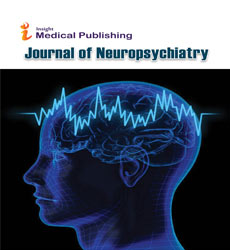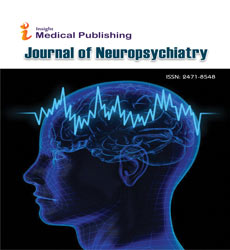ISSN : 2471-8548
Journal of Neuropsychiatry
What Diagnosis in Psychiatry?
Centro Studi e Ricerche “Gaetano Perusini”, Via Prisciano 26, 00136-Rome, Italy
- *Corresponding Author:
- Michele Raja
Centro Studi e Ricerche “Gaetano Perusini”
Via Prisciano 26, 00136-Rome, Italy
Tel: +39 3473422158
E-mail: michele.raja@fastwebnet.it
Received date: November 06, 2017; Accepted date: November 20, 2017; Published date: November 30, 2017
Citation: Michele R. What Diagnosis in Psychiatry? J Neuropsychiatry 2017, Vol. 1 No. 1:3. doi:10.21767/2471-8548.10003
Copyright: © 2017 Michele R. This is an open-access article distributed under the terms of the Creative Commons Attribution License, which permits unrestricted use, distribution, and reproduction in any medium, provided the original author and source are credited.
Editorial
Over 50 years ago, in a famous field experiment, Rosenhan [1] demonstrated that the diagnostic procedures used at that time in psychiatry were neither reliable nor valid. He concluded his paper with dramatic words: "It is clear that we cannot distinguish the sane from the insane in psychiatric hospitals".
Responding to Rosenhan's conclusions and suggestions, Spitzer [2] wondered: “Should psychiatric diagnosis be abandoned for a purely descriptive system that focuses on simple phenotypic behaviors before it has been demonstrated that such an approach is more useful as a guide to successful treatment or for understanding the role of genetic factors. I think not”.
Based on that “no” of Spitzer and of most American psychiatrists, the DSM-III and its subsequent versions were born, up to the recent DSM-5. However, one may question where do we stand now, almost forty years after the DSM-III publication, since we continue to deal with the same difficulties.
Despite efforts made in recent years to increase the reliability and validity of diagnostic criteria, available data show that current psychiatric diagnoses are not valid. On April 29, 2013, the NIMH director, Thomas Insel, published a critical article on DSM [3] in which he wrote: “While DSM has been described as a “Bible” for the field, it is, at best, a dictionary, creating a set of labels and defining each. The strength of each of the editions of DSM has been “reliability”. The weakness is its lack of validity. That is why NIMH will be re-orienting its research away from DSM categories. Going forward, we will be supporting research projects that look across current categories – or sub-divide current categories – to begin to develop a better system”.
He proposed a new classification system for psychiatric disorders based on psychopathological dimensions more closely related to biological data, and no longer on categories. It is a point of view similar to that of Rosenhan who believed it would have been correct to diagnose “auditory hallucinations”, and not “schizophrenia” in his healthy associates who had feigned auditory hallucinations in an attempt to gain admission to psychiatric hospitals.
Actually, psychiatrists are still facing the old dilemma: on what basis is it possible to construct a valid classification of mental abnormalities? Symptoms, syndromes, disorders or diseases? The term “symptom” refers to an observable behavior or state, the simplest level of analyzing a presenting problem. “Syndrome”, or “disorder”, the next higher level of analysis, refers to a cluster of symptoms that occur together or co-vary over time, and “disease”, the highest level of analysis, refers to a disorder whose underlying etiology is known.
The approach to symptoms is that suggested by Rosenhan and, in essence, by Insel. The approach to syndromes and disorders is the hallmark of the successive versions of DSM.
Obviously, if a higher level of analysis fails repeatedly and shows low heuristic value it is necessary to go down to the lower level. That is what Insel really recommends at least in the research field: “Clinical trials might study all patients in a mood clinic rather than those meeting strict major depressive disorder criteria. Studies of biomarkers for “depression” might begin by looking across many disorders with anhedonia or emotional appraisal bias or psychomotor retardation to understand the circuitry underlying these symptoms” [3].
What should be done in clinical practice?
On May 14, 2013, probably in order to mitigate the crisis and calm the controversy, Insel and Lieberman, the president of the American Psychiatric Association, released a joint statement, saying that the DSM “represents the best information currently available for clinical diagnosis of mental disorders”. But, is it so? DSM diagnoses are still a useful reference point when writing scientific articles or formulating administrative, social or legal certification. However, dimensional diagnoses have become more and more decisive in clinical practice, especially when choosing treatment. Specific behaviors and symptoms are the real target of treatment and guide the choice of therapies. For example, antidopaminergic drugs are commonly used to treat psychotic symptoms, regardless of categorical diagnoses and of symptom intensity - from severe delusions to overvalued ideas or subtle disorganization of thought. Anticonvulsants are used in the treatment of all forms of mood or anxiety alterations, whatever the syndromic diagnosis and the intensity of symptoms - from the most serious to the under-threshold forms. Actually, all psychiatric drugs have shown a wide spectrum of action and are effective in treating different psychiatric disorders. This is a further proof of the poor validity of the current classification system of psychiatric disorders as well as of the shortcoming of the contemporary nomenclature of psychoactive drugs (e.g., antipsychotics, antidepressants, mood stabilizers, etc.).
Currently, there is a lot of confusion in the field of psychiatric diagnosis that makes difficult research, clinical activity, and communication with patients and their families. This challenging state of affairs will not change in the immediate future. However, some initiatives could be taken to overcome the present difficulties, e.g., 1) defining reliable and quantifiable diagnostic criteria of psychopathological dimensions, patterns of behavior, and single symptoms; 2) promoting and publishing studies and researches based on these criteria; 3) evaluating the effectiveness of treatments not only on syndromes but also on specific symptoms (as in the case of drugs used to treat hypertension, hypercholesterolemia, fever or pain); [4] accepting also dimensional diagnoses for insurance, pension and legal purposes.
References
- Rosenhan DL (1973) On being sane in insane places. Science 4070: 250-258.
- Spitzer RL (1975) On pseudoscience in science, logic in remission, and psychiatric diagnosis: a critique of Rosenhan's "On being sane in insane places". Journal of Abnormal Psychology 84: 442-452.
- Insel TR (2013) Transforming Diagnosis. National Institute of Mental Health.
- Insel TR, Lieberman JA (2013) DSM-5 and RDoC: Shared Interests. National Institute of Mental Health.

Open Access Journals
- Aquaculture & Veterinary Science
- Chemistry & Chemical Sciences
- Clinical Sciences
- Engineering
- General Science
- Genetics & Molecular Biology
- Health Care & Nursing
- Immunology & Microbiology
- Materials Science
- Mathematics & Physics
- Medical Sciences
- Neurology & Psychiatry
- Oncology & Cancer Science
- Pharmaceutical Sciences
